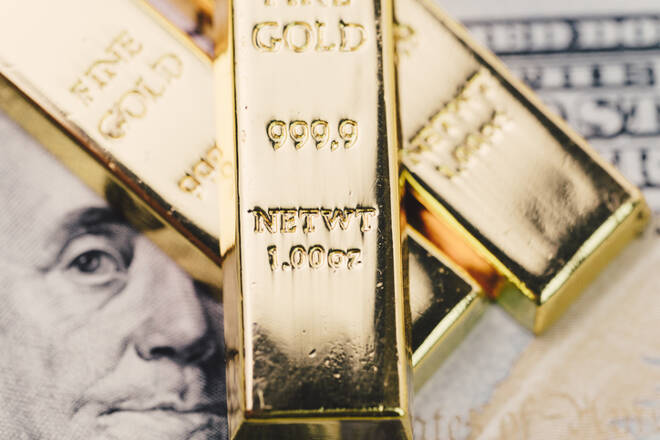Advertisement
Advertisement
Price of Gold Fundamental Daily Forecast – Choppy as Omicron Impact Dims Correlation with Yields
By:
When you don’t expect to see a trend develop, you have to to willing to sell rallies into resistance and buy breaks into support.
Gold futures are under pressure on Monday on relatively low volume as traders return from the long Christmas weekend. However, we’re not expecting much of an uptick in the volume as we head into this weekend’s New Year holiday.
Thin trading conditions can lead to two scenarios: tight trading ranges or exaggerated breakouts that fail. Both make trading difficult especially if there isn’t a major fundamental event driving the price action.
At 10:25 GMT, February Comex gold futures are trading $1805.80, down $5.90 or -0.33%. Last Thursday, the SPDR Gold Shares ETF (GLD) settled at $168.98, up $0.39 or +0.23%.
The two fundamentals in the spotlight today are U.S. Treasury yields and the U.S. Dollar.
Benchmark U.S. Treasury yields are edging higher, increasing the opportunity cost of holding bullion, which pays no interest. The U.S. Dollar Index is also edging higher, up from its weakest level in nearly a week, making dollar-denominated gold less-attractive to foreign buyers.
Mixed Fundamentals Locking Gold in a Range
Last week, gold prices rose on increased demand for higher risk assets. Did gold suddenly become a higher risk asset? The answer is no.
An easing of tensions over Omicron led to the increased demand for higher yielding assets. In doing so, investors sold the safe-haven Treasurys, driving up yields. But we just told you that higher yields tend to weigh on non-yielding gold. So this move was likely ignored by gold traders.
But, investors also liquidated safe-haven positions in the U.S. Dollar. The greenback fell even though yields rose. However, the weaker dollar was probably the reason for the increased demand for gold.
Got it? At times like these when risk sentiment and safe-haven buys and sells are involved, you can throw out all of the correlation studies. They just don’t work especially when volume is below average.
The problem is the Omicron coronavirus variant causing this disjointed trading activity is not likely to go away with Dr. Fauci, the U.S. infectious disease expert, saying conditions could worsen – meaning the number of cases is expected to keep rising. This could mean more safe-haven buying of Treasurys and the U.S. Dollar, and more liquidation of these assets when the Omicron numbers retreat.
So what can you do as a trader? When you don’t expect to see a trend develop in either direction, you have to be willing to sell rallies into resistance and buy breaks into support until conditions create a strong opportunity for a trend to develop.
The daily chart identifies resistance as $1817.50 to $1832.70. The key support is $1784.40 to $1777.00.
Essentially, if Omicron becomes enough of an issue to dim risk sentiment, then look for yields to fall and the dollar to rise as traders seek safe-haven protection. This could weigh on gold prices.
If Omicron becomes less of an issue then look for risk sentiment to rise. This would lead to safe-haven dollar liquidation and higher gold prices.
For a look at all of today’s economic events, check out our economic calendar.
About the Author
James Hyerczykauthor
James Hyerczyk is a U.S. based seasoned technical analyst and educator with over 40 years of experience in market analysis and trading, specializing in chart patterns and price movement. He is the author of two books on technical analysis and has a background in both futures and stock markets.
Advertisement
